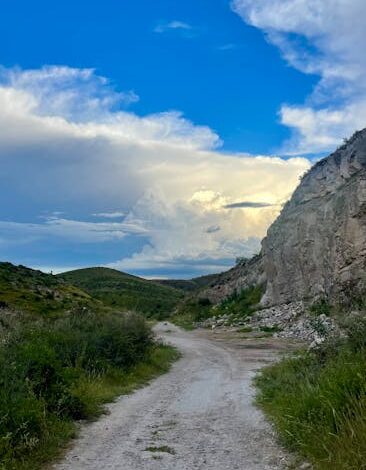Inside the Nuclear Bunkers, Mines, and Mountains Being Retrofitted as Data Centers

Inside the Nuclear Bunkers, Mines, and Mountains Being Retrofitted as Data Centers
Estimated Reading Time: 5 minutes
- Companies are strategically moving data centers underground to decommissioned nuclear bunkers, mines, and mountains to achieve unparalleled physical security and resilience against diverse threats.
- Subterranean locations offer significant advantages, including enhanced environmental control leading to greater energy efficiency and reduced cooling costs, as well as providing vast, scalable space for expansion.
- The transformation process is a monumental engineering feat, with each type of location (bunkers, mines, mountains) presenting unique benefits and challenges requiring specialized retrofitting.
- Real-world examples, such as Bahnhof’s Pionen data center in Sweden, demonstrate the successful implementation of these concepts, combining robust security with innovative and sustainable design.
- Businesses should prioritize assessing their current data resilience, exploring naturally fortified storage solutions, and partnering with data center providers who emphasize sustainability and energy efficiency.
- Inside the Nuclear Bunkers, Mines, and Mountains Being Retrofitted as Data Centers
- The Lure of the Deep: Why Go Underground?
- From Cold War Relics to Digital Fortresses: The Transformation Process
- Real-World Example: Bahnhof’s Pionen White Mountain Data Center
- Actionable Steps for Future-Proofing Data Infrastructure
- 1. Assess Your Current Data Resilience and Security Posture
- 2. Explore Alternative, Naturally Fortified Data Storage Solutions
- 3. Prioritize Sustainability and Energy Efficiency in Data Center Partnerships
- Conclusion
- Frequently Asked Questions
In an age defined by digital connectivity, our reliance on robust and secure data infrastructure has never been greater. From streaming our favorite shows to managing global financial markets, every aspect of modern life hinges on the availability and integrity of data. This ever-increasing demand, coupled with growing concerns over physical threats, environmental sustainability, and the sheer cost of maintaining server farms, has led to a fascinating and profound shift in how we approach data center design and location. Faced with a world of escalating risks, both natural and man-made, visionary companies are now turning to the most unexpected and naturally fortified locations imaginable.
Indeed, companies are going to great lengths to protect the infrastructure that provides the backbone of the world’s digital services—by burying their data deep underground. This isn’t science fiction; it’s a strategic move to leverage the inherent strengths of decommissioned military bunkers, abandoned mines, and the unyielding mass of mountains. These subterranean fortresses are being meticulously retrofitted and reimagined as the ultimate sanctuaries for critical digital assets, promising unparalleled security, resilience, and often, surprising environmental benefits.
The Lure of the Deep: Why Go Underground?
The decision to move data centers underground is driven by a confluence of compelling factors, each addressing significant challenges faced by conventional, above-ground facilities. It’s a strategic pivot towards extreme resilience, offering layers of protection that are simply unachievable on the surface.
Firstly, unrivaled physical security stands as a primary motivator. Buried deep within rock or reinforced concrete, data centers become virtually impervious to a wide array of threats. This includes natural disasters such as hurricanes, tornadoes, earthquakes, and tsunamis, which can wreak havoc on surface infrastructure. Beyond environmental dangers, subterranean locations offer formidable defense against malicious attacks, from physical intrusions and sabotage to electromagnetic pulses (EMPs) and even conventional bombings. The sheer mass above provides a natural shield, making these sites incredibly difficult to access or compromise.
Secondly, enhanced environmental control and energy efficiency present a significant draw. The earth itself acts as a massive insulator, providing a naturally stable temperature and humidity environment. This steady geological temperature dramatically reduces the energy required for cooling, a notorious power hog for traditional data centers. Less reliance on mechanical cooling systems translates directly into lower operational costs and a smaller carbon footprint. In some locations, geothermal energy or underground water sources can be harnessed for additional cooling or even power generation, further boosting sustainability metrics.
Thirdly, the potential for immense space and scalability is often underestimated. Many abandoned mines or vast underground complexes offer expansive, often cavernous, spaces that can be repurposed and expanded over time without the costly and complicated process of acquiring new surface land. This allows for significant growth in server capacity and infrastructure without impacting surface ecosystems or urban development plans, providing a discreet solution to the ever-growing demand for digital storage.
From Cold War Relics to Digital Fortresses: The Transformation Process
The journey from a disused military installation or an obsolete mining complex to a cutting-edge data center is a monumental undertaking, requiring vast engineering expertise, significant investment, and an innovative vision. Each type of location presents unique opportunities and challenges.
Nuclear Bunkers: These Cold War relics, built for survival in the direst circumstances, are inherently robust. Their thick concrete walls, blast-proof doors, and often EMP-shielded designs make them ideal candidates for high-security data storage. Retrofitting involves addressing issues like asbestos removal, upgrading ventilation systems to modern standards, installing redundant power grids, and running high-speed fiber optic cables deep into their confines. Their existing secure perimeters and limited access points are significant advantages.
Mines: Abandoned iron ore, limestone, or salt mines offer vast networks of tunnels and chambers. The stable rock provides excellent insulation and natural protection. However, challenges include managing water ingress, ensuring geological stability, and navigating the sheer scale of these environments. Extensive geological surveys, advanced dewatering systems, and massive infrastructure projects for power and connectivity are essential. The consistent subterranean temperature in many mines is a major benefit for cooling.
Mountains: In some cases, entirely new data centers are excavated directly into the heart of mountains. This approach allows for bespoke design and optimization from the ground up, but comes with the highest initial construction costs. The benefits are similar to mines: natural protection, stable temperatures, and often the ability to integrate with nearby hydroelectric power sources. Strategic location, often near major fiber optic routes, is key.
Real-World Example: Bahnhof’s Pionen White Mountain Data Center
A prime example of this trend is Bahnhof’s Pionen data center in Stockholm, Sweden. Housed in a former civil defense bunker carved into a solid granite mountain, Pionen is a marvel of secure and sustainable design. It features diesel engines for backup power sourced from submarines, simulated daylight, waterfalls, and even a large saltwater fish tank—all within a facility built to withstand a nuclear attack. This unique environment provides robust security, natural cooling benefits, and a truly distinctive workplace for its technicians, showcasing the potential for repurposing these extraordinary spaces.
Regardless of the original structure, the transformation invariably includes installing state-of-the-art fire suppression systems, advanced access control, redundant power supplies (often with multiple power lines coming from different directions), and cutting-edge cooling infrastructure tailored to harness the natural environment while dissipating the immense heat generated by modern servers. High-capacity fiber optic networks are critical, ensuring low-latency connectivity to the surface world.
Actionable Steps for Future-Proofing Data Infrastructure
For businesses and organizations grappling with data security, resilience, and sustainability concerns, the shift towards these fortified, subterranean solutions offers valuable lessons and practical considerations. Future-proofing your digital backbone means looking beyond traditional approaches.
-
1. Assess Your Current Data Resilience and Security Posture
Begin by conducting a comprehensive audit of your existing data infrastructure. Identify vulnerabilities to natural disasters, physical attacks, and potential downtime. Evaluate your current data center locations for single points of failure, geographical risks, and the robustness of their physical security measures. Understanding your risk profile is the first step towards building truly resilient systems. Consider the full spectrum of threats, from local power outages to regional seismic activity, and how quickly your operations could recover.
-
2. Explore Alternative, Naturally Fortified Data Storage Solutions
Investigate colocation or dedicated facility options within underground, purpose-built, or highly fortified data centers. While building your own subterranean facility might be impractical, partnering with providers specializing in these secure environments can offer unparalleled peace of mind. Consider a hybrid cloud strategy where your most critical data and applications reside in these ultra-secure physical locations, complementing the flexibility of public cloud services for less sensitive workloads. Research providers known for their unique physical security and disaster recovery capabilities.
-
3. Prioritize Sustainability and Energy Efficiency in Data Center Partnerships
As you evaluate data center providers, place a strong emphasis on their commitment to sustainability and energy efficiency. Look for facilities that actively leverage natural cooling, utilize renewable energy sources (like hydro or geothermal), and demonstrate a low Power Usage Effectiveness (PUE) score. The inherent benefits of subterranean locations often align perfectly with these goals. Opting for greener data solutions not only reduces operational costs but also aligns with corporate social responsibility initiatives, contributing to a more sustainable digital future.
Conclusion
The transformation of nuclear bunkers, mines, and mountains into advanced data centers represents a fascinating evolution in the quest for ultimate digital resilience. It underscores a fundamental shift in how we perceive and protect our most valuable asset: information. By leveraging the earth’s natural defenses and combining them with cutting-edge technology, these subterranean fortresses offer unparalleled security, environmental control, and energy efficiency.
As the digital landscape continues to expand and diversify, the need for robust, secure, and sustainable infrastructure will only intensify. The move to bury our data deep underground is more than just a novelty; it’s a strategic imperative, ensuring that the backbone of our connected world remains strong, secure, and ready for whatever the future may hold.
Discover How Your Data Can Benefit from Extreme Security – Contact Us Today!
Frequently Asked Questions
Q: What are the primary advantages of housing data centers underground?
A: The primary advantages include unparalleled physical security against natural disasters and malicious attacks, enhanced environmental control for improved energy efficiency (due to the earth’s natural insulation), and often the potential for vast, scalable space without impacting surface ecosystems.
Q: Are underground data centers more environmentally friendly?
A: Yes, generally. The stable subterranean temperatures significantly reduce the energy required for cooling, which is a major power consumer in traditional data centers. This leads to lower operational costs and a smaller carbon footprint. Some locations can also leverage geothermal energy or underground water sources for further sustainability.
Q: What challenges are involved in converting old bunkers or mines into data centers?
A: Challenges vary by site but can include managing water ingress (in mines), ensuring geological stability, asbestos removal (in bunkers), upgrading outdated ventilation and power systems, and installing high-speed fiber optic connectivity deep underground. These projects require extensive engineering expertise and significant investment.





